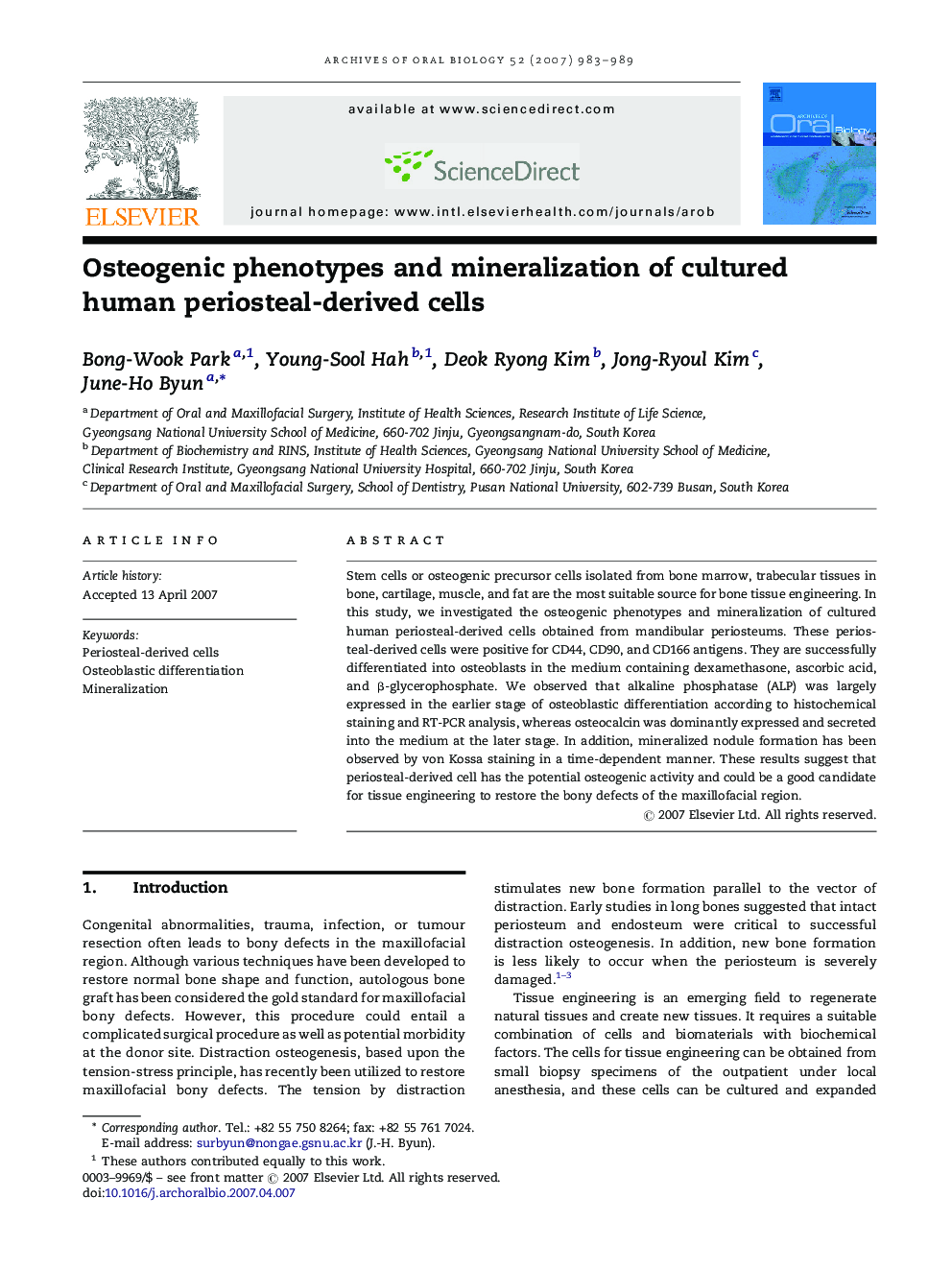| Article ID | Journal | Published Year | Pages | File Type |
|---|---|---|---|---|
| 3121449 | Archives of Oral Biology | 2007 | 7 Pages |
Stem cells or osteogenic precursor cells isolated from bone marrow, trabecular tissues in bone, cartilage, muscle, and fat are the most suitable source for bone tissue engineering. In this study, we investigated the osteogenic phenotypes and mineralization of cultured human periosteal-derived cells obtained from mandibular periosteums. These periosteal-derived cells were positive for CD44, CD90, and CD166 antigens. They are successfully differentiated into osteoblasts in the medium containing dexamethasone, ascorbic acid, and β-glycerophosphate. We observed that alkaline phosphatase (ALP) was largely expressed in the earlier stage of osteoblastic differentiation according to histochemical staining and RT-PCR analysis, whereas osteocalcin was dominantly expressed and secreted into the medium at the later stage. In addition, mineralized nodule formation has been observed by von Kossa staining in a time-dependent manner. These results suggest that periosteal-derived cell has the potential osteogenic activity and could be a good candidate for tissue engineering to restore the bony defects of the maxillofacial region.
